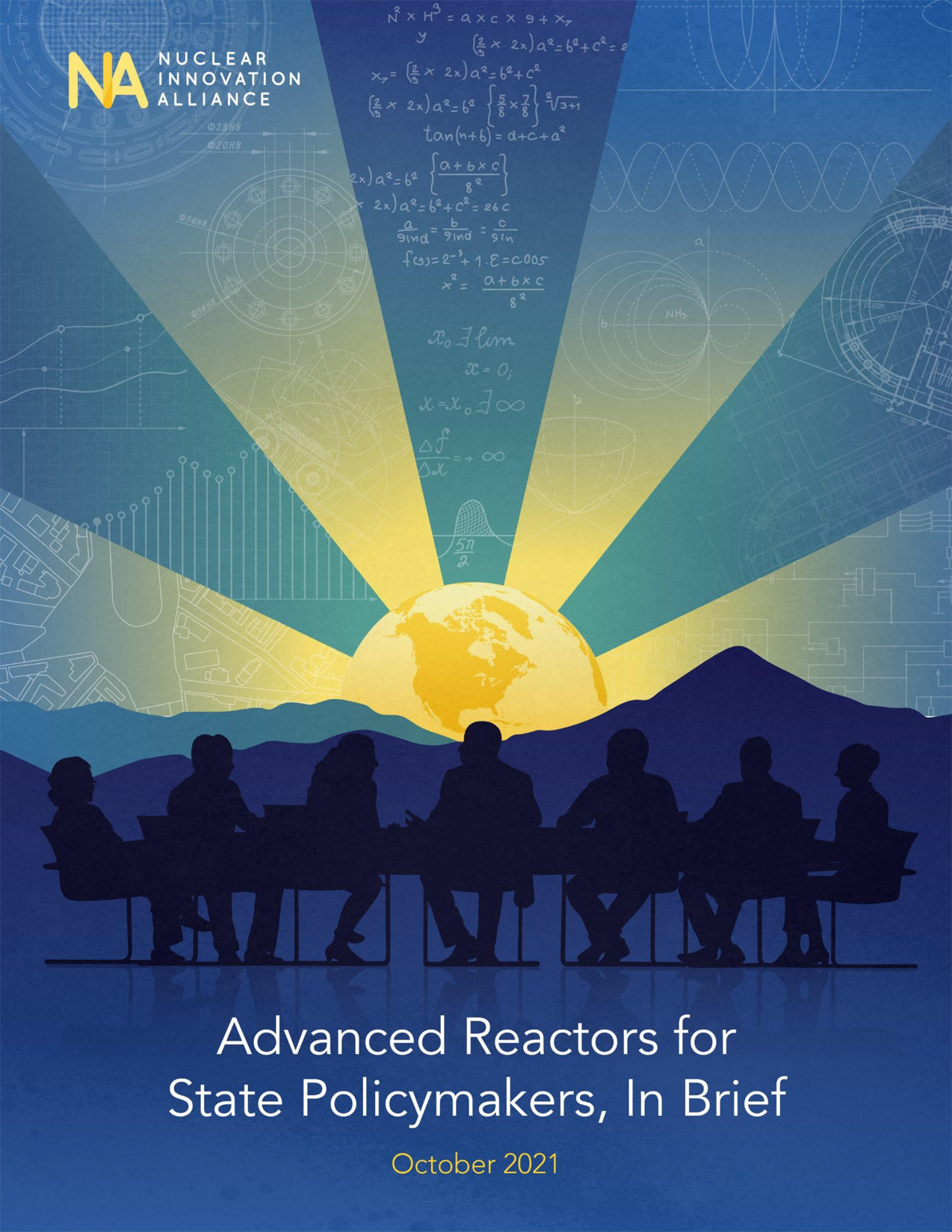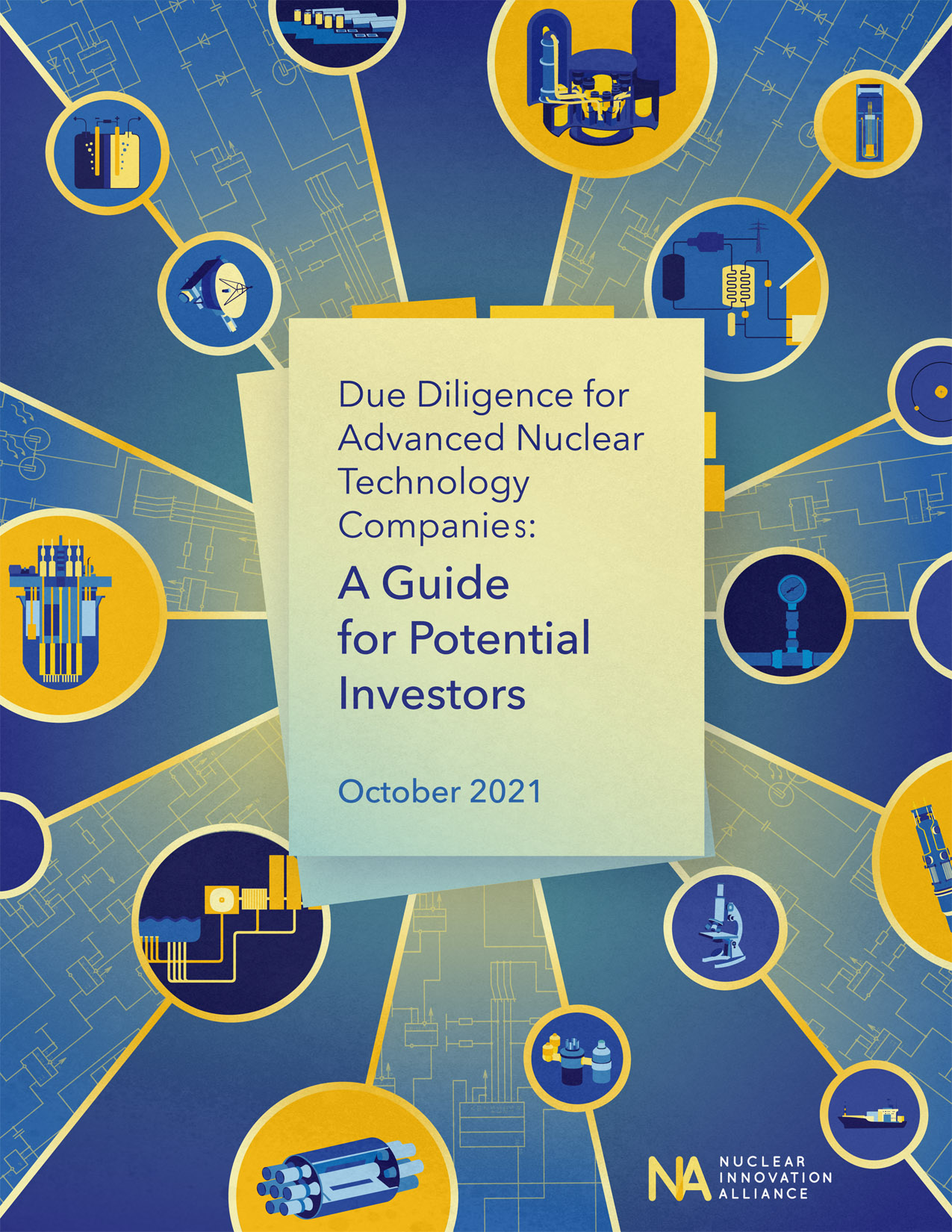SRNS's Communications and Media Services Department was honored with two 2021 Telly Awards. Members of the department include, from left, Robin Adney, Ian Rojas-Godoy, Brad Bohr, Nathan Lester, Steve Ashe, and Laura Russo. (Photo: DOE)
Along with established entertainment mediums such as Jennifer Garner’s “Pretend Cooking Show” and the Nickelodeon TV channel, Department of Energy contractor Savannah River Nuclear Solutions (SRNS) has been named a winner in two categories of this year’s Telly Awards.
SRNS’s Communications and Media Services Department won a Gold Telly for the video “Savannah River Site Overview” in the non-broadcast, corporate image category, and a Bronze Telly for “SRNS Now: September 2020” in the non-broadcast, employee communications category.
North Dakota Sen. Kevin Cramer speaks at a November 3 press conference announcing the American Energy, Jobs & Climate Plan.
A trio of Republican lawmakers from Western states—Sens. Dan Sullivan (Alaska), Kevin Cramer (N.D.), and Cynthia Lummis (Wyo.)—held a press conference at the Capitol yesterday to announce the American Energy, Jobs & Climate Plan, a response to what they termed the “Biden-Kerry Green New Deal.” Also in attendance were fellow Republican senators Ted Cruz (Texas), John Kennedy (La.), and Rob Portman (Ohio).
The plan is “an innovative clean energy and climate strategy with the potential to reduce global [greenhouse gas] emissions by up to 40 percent from today’s levels by 2050 and create thousands of jobs for hard-working Americans,” according to a press release from Sullivan’s office.
In April, the Biden administration announced a target of net-zero GHG emissions by 2050, with an interim target of a 50–52 percent reduction from 2005 levels by 2030.
(Source: Peter Schrank/The Economist)
“Where nuclear power was once a source of unity for Europe, today it is a source of discord.” So states The Economist’s October 30 “Charlemagne” column—a regular source of commentary on European politics in the weekly publication—before deftly dissecting nuclear power’s continental divide and picking a winner.
eVinci micro reactor core, (Illustration: Westinghouse)
A recently completed feasibility study by Westinghouse Electric Company and Bruce Power concludes that the eVinci microreactor is capable of providing cost-competitive clean energy to decentralized, off-grid markets in Canada.
Flags in front of the European Commission building in Brussels. (Image: Sébastien Bertrand)
Sixteen ministers from 10 European Union member states argue for adding nuclear energy to the EU taxonomy in a joint letter published last week in leading European newspapers and sent to the European Commission.
The Brokdorf nuclear plant, located in Germany’s Schleswig-Holstein region on the Elbe river, is scheduled to close later this year. (Photo: Alois Staudacher, CC BY-SA 3.0)
In an open letter published last week in Welt, 25 leading German and foreign academics, environmentalists, and journalists attempt to convince the German people that continuing with their nation’s phase-out of nuclear power is not a good idea, and certainly not a green one.
Inside the New Safe Confinement covering the sarcophagus of Chernobyl’s Unit 4. (Photo: SSE Chornobyl NPP)
A team of scientists from the United Kingdom’s University of Bristol were given access to the Chernobyl nuclear power plant in Ukraine, advancing a project to train robots and artificial intelligence systems to measure radiation and create 3D maps.
A slideshow of the team’s visit to Chernobyl’s Unit 4 control room and New Safe Confinement structure, where they deployed radiation mapping and scanning sensors, including a LIDAR-equipped robot call Rooster, appears on Gizmodo.
This June 2021 photo of ITER vacuum vessel sector #6 includes two panels of thermal shielding ready to slide into place. (Photo: ITER/Courtesy of Chang Hyun Noh)
Following a week of heightened attention to all things hydrogen preceding Hydrogen and Fuel Cell Day (October 8), Bernard Bigot, director general of the ITER Organization, published an op-ed on October 11 in The European Files, a magazine billed as an “effective work tool for European deciders.” Bigot’s article, “Hydrogen fusion: The way to a new energy future,” doubled as a fusion primer, promoting the technology as a future source of clean energy that is fueled by hydrogen and is capable of providing heat and power to produce more hydrogen.
Three isophase bus ducts at a nuclear power plant exit the turbine building at the upper left, then branch off the main buses (center) to the reactor unit's auxiliary transformer on the right. (Photo: Ameren Missouri)
Over the course of the last year, many power plants have shortened, postponed, or rescheduled their maintenance outages due to the pandemic. Unfortunately, this has caused some critical maintenance activities to be put on the back burner. For some in the power generation industry, this has presented uncertainties as the volume of unplanned outages caused by deferred maintenance has risen.
Savannah River Remediation’s Mark Schmitz (left) and Denmark Technical College’s Willie L. Todd Jr. sign a memorandum of understanding to reaffirm the partnership between their respective organizations. (Photo: SRR)
Savannah River Remediation (SRR) and South Carolina’s Denmark Technical College (DTC) have renewed a memorandum of understanding that has a goal of preparing DTC students for work in the industrial and nuclear environment while also providing SRR with a potential pipeline of future employees.
SRR is the Savannah River Site’s liquid waste contractor, consisting of a team of companies led by Amentum, with partners Bechtel National, Jacobs, and BWX Technologies. Subcontractors include Orano, Atkins, and Amentum N&E Technical Services.
DTC is South Carolina’s only technical college that is also a historically black college or university.










 Doubtless with the intention of influencing some of the many nuclear agnostics expected at next week’s COP26 Climate Change Conference in Glasgow, the International Atomic Energy Agency last week released
Doubtless with the intention of influencing some of the many nuclear agnostics expected at next week’s COP26 Climate Change Conference in Glasgow, the International Atomic Energy Agency last week released 








